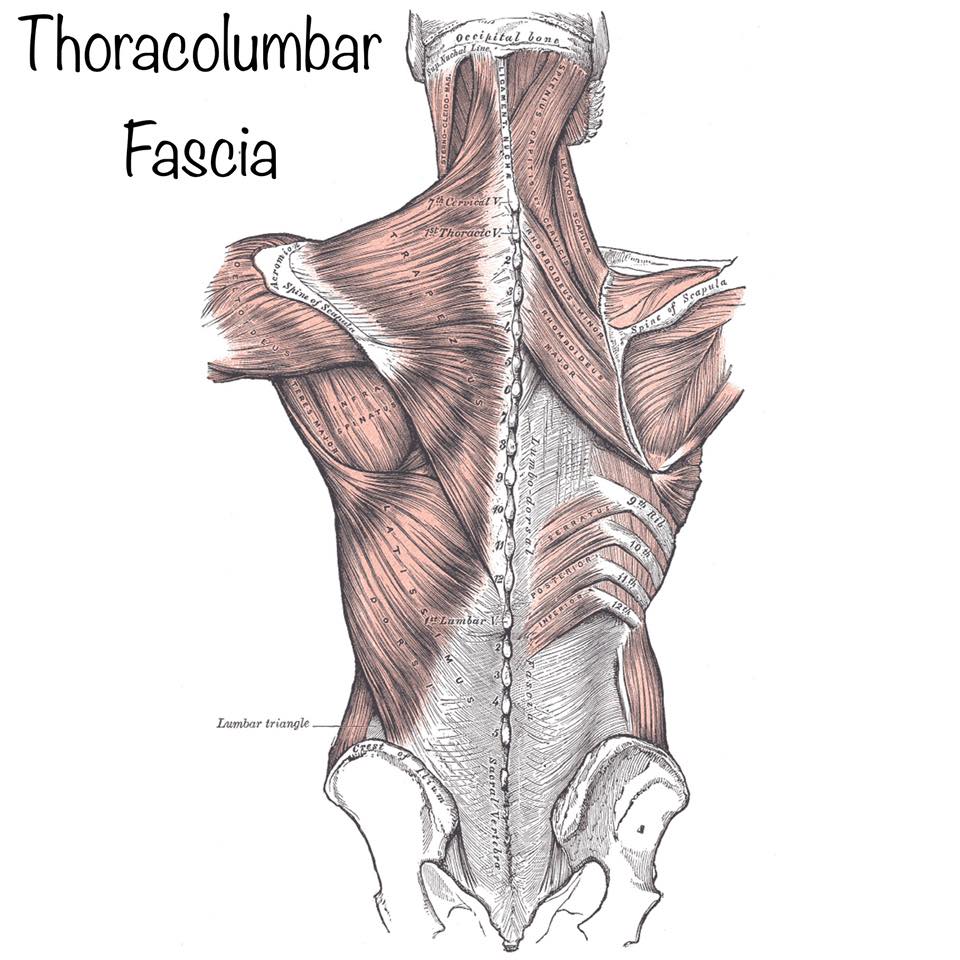A painful neck or backache is attributed to tired muscles or stiff joints. But these symptoms can also be caused by a part of your body less heard of called the fascia.

What is Thoracolumbar Fascia (TLF)?
Fascia is a thin casing of connective tissue that surrounds and holds every organ, blood vessel, bone, nerve fiber, and muscle in place. The tissue does more than provide internal structure; the fascia has nerves that make it almost as sensitive as skin. When stressed, it tightens up.
According to Dr. Igor Smelyansky, a physician certified in neurology and pain management, “The thoracolumbar fascia is a layer of connective tissue covering the back and sides of the trunk, extending from the base of the skull to the sacrum.”
Its role is to stabilize the lumbar spine and pelvis, protect the spinal elements, and help maintain an upright posture. The fascia connects different muscle groups and coordinates their movement. The erector spinae muscles, which extend the spine, attach to the thoracolumbar fascia, generating tension to stabilize the lumbar spine, which is extremely important for us to balance ourselves while walking. We walk on two feet, with only one of them making contact with the ground at a time. So we need alternating pressure and tension in both the right and left side thoracolumbar fascias to posture while walking.
The thoracolumbar fascia is also involved in breathing, connecting to the diaphragm, and coordinating its movement with the muscles of the trunk and back.
Causes of Fascial Restriction
The fascial restriction has a variety of causes, which are mostly related to trauma, injuries, or not moving enough.
These causes include:
- Overuse
- Repetitive movements
- Injuries
- Weak muscles
- Poor posture
- Physical, mental, or emotional stress
- Extended periods of sitting or standing
- Overall lack of physical activity
- Misalignments and imbalances
Exercises to build strength around the TLF region
Jordan Rosewarne, a licensed osteopath and owner of the MPR Health osteopathic clinic based in Sydney shares five exercises that can help build strength around the TLF region:
- Plank – This exercise is great for engaging the TLF as it requires maintaining a neutral spine position while supporting the body on the forearms and toes.
- Deadlifts – This exercise targets the lower back and glute muscles, which work together with the TLF to maintain good posture and alignment.
- Bird Dog – This exercise stabilises the spine while challenging balance and coordination.
- Side Plank – This exercise focuses on the muscles on the sides of the body and is excellent for building strength in the TLF and obliques.
- Superman – This exercise strengthens the muscles of the lower back, which work in conjunction with the TLF to maintain spinal alignment.
Rosewarne adds “It is crucial to consult with a doctor or osteopath if you experience pain or discomfort around the TLF region. A qualified professional can evaluate your symptoms, provide a diagnosis, and recommend appropriate treatment and exercises to help alleviate pain and restore function.”
If a patient has been receiving osteopathic treatment for a condition related to the thoracolumbar fascia and feels that it’s no longer helping, consult a doctor. While osteopathy can be an effective treatment for many musculoskeletal conditions, there may be underlying medical issues that require a different approach.
Summary
Regular stretching and joint mobility routine are essential to maintain flexible, healthy fascia. Include plenty of physical activity and allow yourself plenty of time for rest, relaxation, and sleep. Commit to improving your fitness level and overall well-being, which can help you feel and perform better.
About the authors:
- Jordan Rosewarne, is a licensed osteopath and owner of the MPR Health osteopathic clinic based in Sydney. https://www.linkedin.com/in/jordan-rosewarne-osteopath/
- Dr. Igor Smelyansky, is a physician who is double board certified in neurology and pain management. I own a private pain management clinic (Omega Pain Management) in Knoxville, TN. https://www.omegapaindoctor.com/
photo source: https://www.physio-pedia.com/